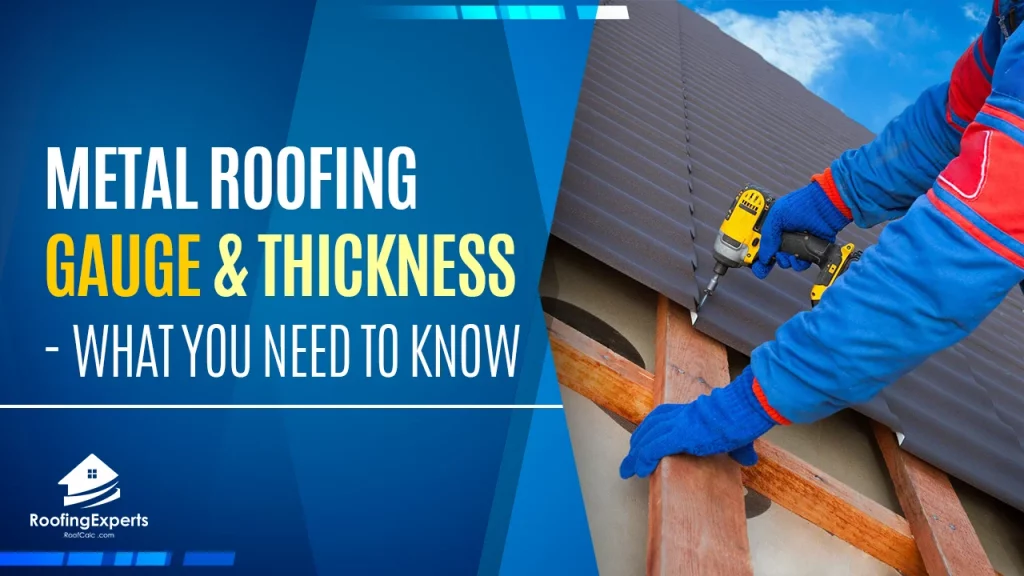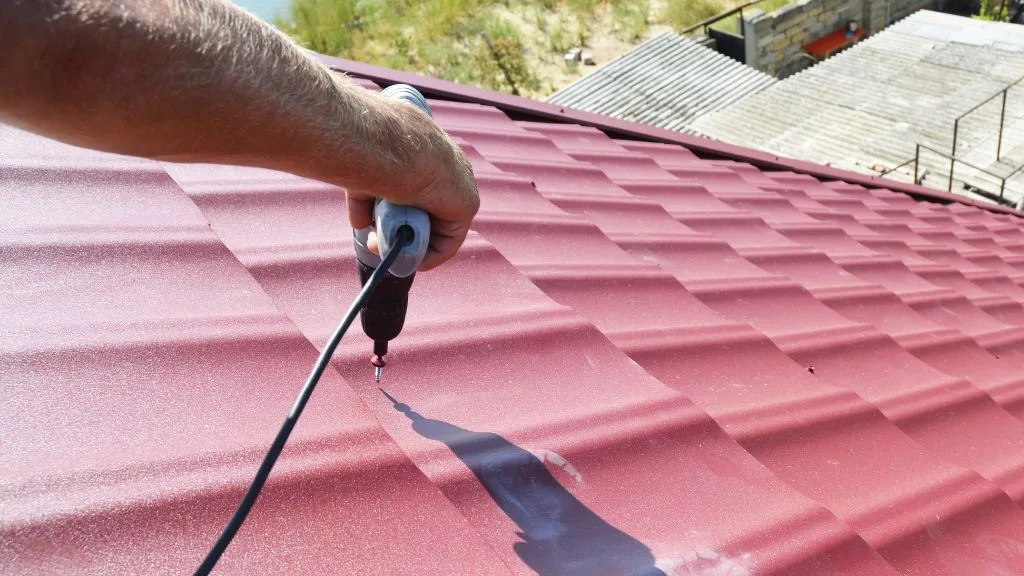
If you are in the market for metal roofing, then one of the most important things to know is how gauge and thickness affect the cost. The gauge of metal refers to its thickness- that’s how many ounces per square foot it weighs.
A standard 16 gauge will weigh about 1 ounce per square foot; a 20 gauge will weight about .8 ounces per square foot. Thicker metals cost more but offer better durability and energy efficiency against wind, hail and fire damage.
What Does Metal Roofing Gauge Mean?
Gauge is a measurement of the thickness of a metal roofing panel. There are a variety of roofing panels that can be used to cover roofs.
Manufacturers in the United States use gauge to express the thickness of metal roof panels. Roof panels vary in thickness from 22 gauge to 29 gauge. The smaller the number, the thicker the panel.
A 20 gauge metal roof will be heavier and more durable than a 16 gauge metal roof of equal size. The durability factor is important to consider when choosing what type of material you would like for your home or business building.
Thicker panels are also better at withstanding high winds caused by storms. Thicker panels are also better at withstanding hail and even fire damage.
If you need a metal roof that is as strong as possible, then it’s recommended to go for the thicker 24 or 26 gauge options.
These will be heavier but can carry more weight from any snow accumulation over time- which means they’re great if your home or business is located in a colder region.
However, if you’re looking for something that’s lighter and easier to install then go with the thinner 16 or 18 gauge options- but know this means they may not be as strong against wind damage and it will also take longer for them to heat up during summer months so they can cool your home faster.
What is the Importance of a Roofing’s Thickness?
The thickness of the metal roof is important for several reasons. The thicker your panel, the stronger and more durable it will be against natural elements like wind, hail and fire damage.
Thicker panels can also carry a higher weight load- which means they’re better at containing heavy snow accumulation over time in colder climates.
Thin gauge panels are easier to install, but they’re also lighter and therefore not as strong. If you live in a climate with heavy winds or hail, then thicker panels are the better choice for your metal roofing installation project.
It is important for a homeowner to know about the gauge of their metal roof. When talking about metal roofing gauge, or thickness, is used. Thicker metal can counterbalance heavier snowfall and high winds.
Thicker steel roofs are the best when it comes to weathering harsh climates with heavy snowfall or high winds in places like Michigan, Minnesota, or in coastal regions.
Thinner metal roofing doesn’t hold up in extreme weather conditions as well as thicker metal roofing. Thinner steel roofs are better suited for places where weather conditions don’t tend to be so harsh.
The thickness of the metal used in a roof affects how long it will last, as well as its durability and its ability to withstand certain types of weather.
Thicker roofs use more material than thinner roofs, but they are less likely to blow off or lose structural integrity in high winds. Thicker roofs are also more durable, and are able to withstand much heavier loads.
Different Gauge Roof Panels Are Used For Different Purposes
Thicker metal roofing typically means a higher cost. Thicker materials are not always better for every construction, but the type of building and location will determine if it needs that extra strength.
29 Gauge Roofs
- Homeowners choose 29 gauge roofs because it is the least expensive. The 29-gauge paneling is good for residential homes.
- The 29 gauge roofs will not be as durable in areas with extreme weather.
- The 29 gauge roof is the least expensive option for metal roofing.
26 Gauge Roofs
- Owners of residential and commercial structures choose 26 gauge roofs since it is the industry standard.
- Because it’s thicker and more structurally sound than 29, yet less expensive than 22 and 24, the buyer decides on 26.
- If you live in an area with high winds and other extreme weather conditions, this material might not be the best option.
- Gauge 26 is a less expensive and more expensive than gauges 22, 24, and 29
24 Gauge Roofs
- People choose 24 gauge roofs because it’s resistant to extreme weather.
- The 24 gauge roofs has low visibility and maintains its appearance.
- Yet another expensive option because of its thickness.
22 Gauge Roofs
- The 22 gauge roofs are the thickest metal roofing type.
- A 22 gauge roof is durable and can withstand harsh weather conditions.
- The 22 gauge roofs are typically the most expensive option.
- The 22 gauge roofs are the thickest and most expensive to purchase.
Why Have Thicker Metal Roofing Materials?
Roofs have been a part of human life for centuries. There are many types of roofs from shingles, to metal, all with their own advantages and disadvantages.
Metal roofs include copper, aluminum, steel etc., but the most common material is steel. Steel is not only used in buildings; it is also used in making vehicles, tools, appliances, and furniture.
Thicker roofing materials means the metal is able to handle heavier loads, and more kinds of weather.
There are a few different types of metals that make up roofs, and their pros and cons.
- Steel is the most common type of metal for roofing, it is strong because of its high density. It also holds paint well, but does not hold nails very well if they come in contact with them.
- Aluminum has been used for roofing, but it is expensive. It doesn’t do well in high-wind areas because it blows apart easily.
- Copper, though more expensive than steel, has found a new use as roofing.
- It will not rust like regular steel roofs, and can last up to 50 years or more if taken care of properly.
- As with aluminum it is not the best in high wind areas, but with proper care it will last for a long time.
- Steel has many different applications, not only as roofing material, but also in vehicles, tools, appliances, and furniture.
- It is one of the most reliable materials out there because of its strength under heavy loads.
- A steel roof can be used on almost any building and will last a long time, as long as it is taken care of properly.
Regardless of which type of metal is used, thickness is important. Thicker metal means the roof can handle heavier loads and more kinds of weather, as well as preserving its structural integrity for longer periods of time.
When to Have Thicker Gauge Roofs
If you are living in an area with extreme weather, it’s best to have thicker panels. When choosing metal roofing for your property, consider the thickness of the material and choose one that will serve its purpose on your home or business.
The 22 gauge roof being the thickest and most expensive option is the best if you are living in areas as such. You need to have thicker roofs if you are living in areas where there is extreme weather.
The thickness of the metal roofing matters for several reasons, especially if you live in an area that experiences harsh weather conditions or has high winds.
You need to have thicker roof panels if you want them to be durable and strong enough against wind damage over time- which means they’re great if you live in colder climates.
Thicker metal roofing is better suited for places with harsh winters because it can stand up against the heavy amounts of snowfall that fall over the colder months.
However, thicker roofs aren’t always better in every situation, and it is important to consider the climate in your area when choosing a roof.

